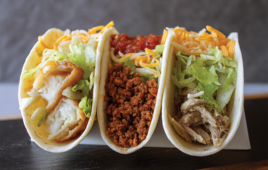 The Food & Drug Administration (FDA) Center for Tobacco Products has loaded itself with more regulatory challenges than it can handle.
The Food & Drug Administration (FDA) Center for Tobacco Products has loaded itself with more regulatory challenges than it can handle.
In 2009, its national health priority was to minimize and eventually end tobacco-related diseases and deaths among smokers and non-smokers alike.
One key strategy was to focus on ending underage tobacco use. If they could nudge the age of that first puff up 10 years or so, more mature personal decision-making might prevail and the number of young smokers would drop. Today, cigarette smokers are 5.3% of 18- to 25 year-olds, half the national average. So far, so good.
Vape Changes the Game
Lowering cigarette use was working fine until vape came along. In 2020, nine years after vape settled into c-stores and smoke shops, new vape brands spiked in usage. Between January 2020 and December 2022, retail e-cigarette sales grew 47%. The National Youth Tobacco Survey showed 2.5 million middle and high school kids using vape. Measured against the 2022 census, that’s an astonishing 11.5% of 12- to 17 year-olds, nearly triple the per-capita use by adults.
Today’s range of disposable and refillable vape products contain nicotine levels far higher than tobacco cigarettes with no set U.S. limit. In 2022, an estimated 185 million vape units were sold at retail in the U.S., an average of 9.6 million units per week. Based on a once-weekly purchase cycle, around 26% of those are destined for underage users; 8% of the population. Do the math.
The FDA strategy for ending youth cigarette smoking hasn’t translated well to vape. Without realizing it, the FDA gave people permission to believe that vape was safer, even though it’s equally addictive. Alternative nicotine products like pouches and lozenges embodied the FDA’s theory that addiction to nicotine without tobacco toxicity is preferable to smoking cigarettes. Without flavors, alternative nicotine products taste bad. That leaves cigarettes.
While this was going on, the FDA also discovered that premium imported cigars were too complex for their equivalency and market authorization process. After several rounds of proposed rulemaking, the rules for cigars are sort of on hold.
While hemp cigarettes are gearing up for mainstream retail, FDA regulations have yet to be proposed. They can’t be tobacco products by statutory definition, and formative rulemaking has no coherent basis. At the moment, warning labels are cut and paste, and there are no pack size rules for hemp cigarettes. Current rules for cannabidiol (CBD) are limited to ingestion and tetrahydrocannabinol (THC) content.
More Rulemaking Means More to Enforce
In 2022, in its biggest move to date, the FDA used its deeming authority to propose bans on menthol tobacco cigarettes along with flavored tobacco cigars from retail stores. That’s rumored to arrive in the last half of 2024. Their stated intent is to reduce cigarette consumption by 25%, especially among Black Americans who predominately smoke menthol, as well as to remove flavored cigars from teen temptation. Lawsuits to follow.
Meanwhile, the same 2021 National Youth Tobacco Survey that alerted us to underage vape growth found that there were 150,000 middle school and high school students smoking menthol cigarettes. Measured against census data, that’s 6/10 of 1%. Seriously?
Throughout all this, the irony is that with each ban and restriction, the FDA created openings and opportunities for new product forms and markets faster than they could measure and evaluate health risks, propose rulemaking to regulate them, let alone establish deeming authority.
Flavored Smokes Are on the Way. Just Without Nicotine.
Instead of ending menthol and flavored smoking products, a whole new range of nicotine-free flavored combustible non-tobacco smoking enjoyment will arrive to replace the tobacco-based offenders. None of these are tobacco products. For now, none are subject to FDA rulemaking.
While the Biden administration is working toward lowering cigarette nicotine content to non-addictive levels, the new wave of nicotine-free menthols and other flavors are already nicotine-FREE with NO tobacco. Many will be enjoyable to smoke. This could be viewed as progress. Maybe not.
It remains to be seen how much appeal nicotine-free combustibles will create, but a lot of effort is going into delivering tasty menthol and other flavors. Companies ranging from STG to Djarum to Global Tobacco, CBD Singlz and TAAT are bringing nicotine-free, non-tobacco products using botanical blends, hemp or CBD infused herbals. Recently vacated retail shelf space will be there for them, thanks to the FDA bans.
Nicotine-free non-tobacco smokes are outside FDA regulatory authority and it should stay that way. The FDA has way too much on their plate already. They don’t have the bandwidth or structure to have much of an impact on vape and cigars beyond what they’ve already achieved, and nicotine alternatives will create more challenges.
Cigarette use has fallen from 19% to 11.7% since 2009. Nicotine-free smoking products are arriving. The FDA may want to sit this one out.
 John Geoghegan has spent the last 30 years in the tobacco business, including vice president strategic planning at General Cigar Co., U.S. manager for DjEEP Lighters, head of marketing for Kretek International Inc. and manager of LaMirada Cigar Co. He began his career 57 years ago at Procter & Gamble. Geoghegan is a graduate of the University of Cincinnati. He lives in Laguna Niguel, Calif.
John Geoghegan has spent the last 30 years in the tobacco business, including vice president strategic planning at General Cigar Co., U.S. manager for DjEEP Lighters, head of marketing for Kretek International Inc. and manager of LaMirada Cigar Co. He began his career 57 years ago at Procter & Gamble. Geoghegan is a graduate of the University of Cincinnati. He lives in Laguna Niguel, Calif.




